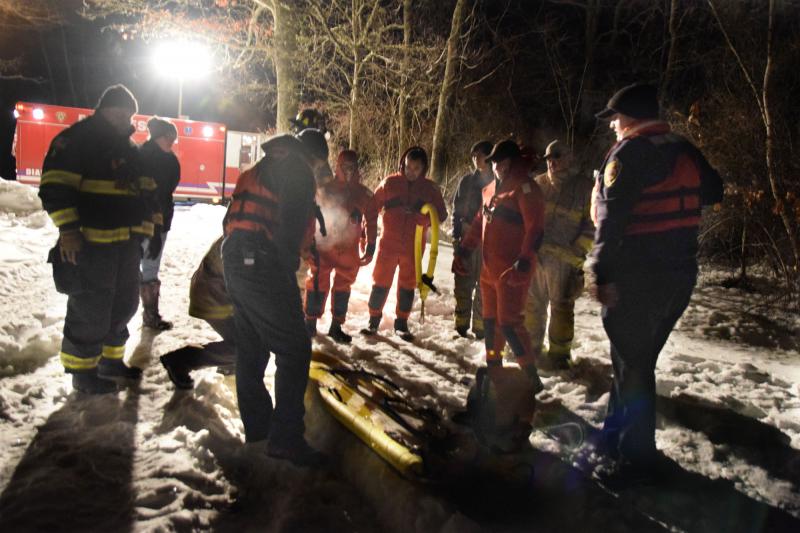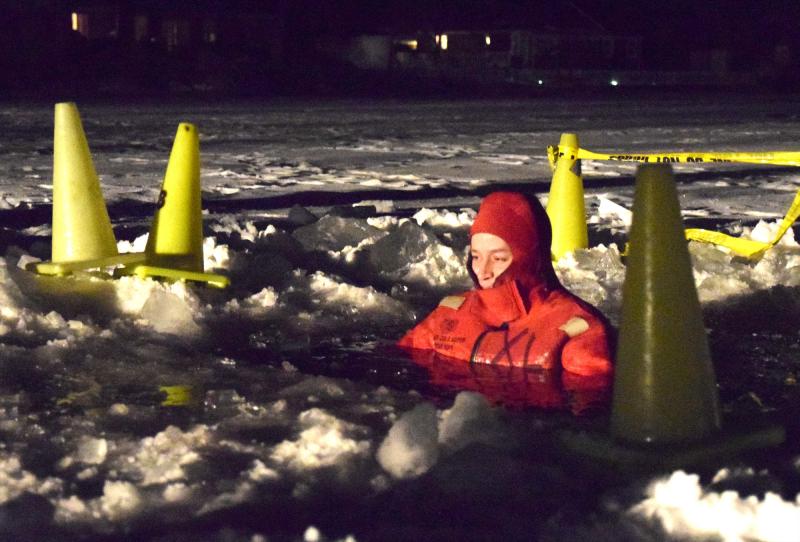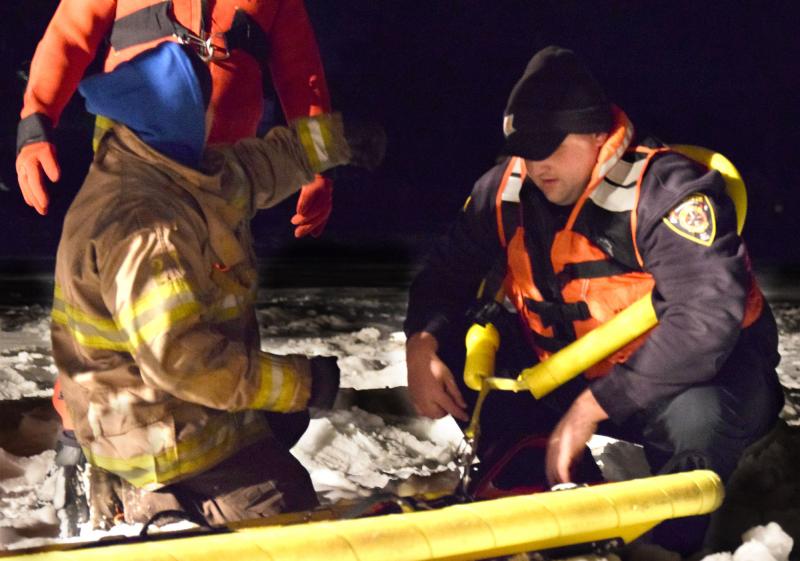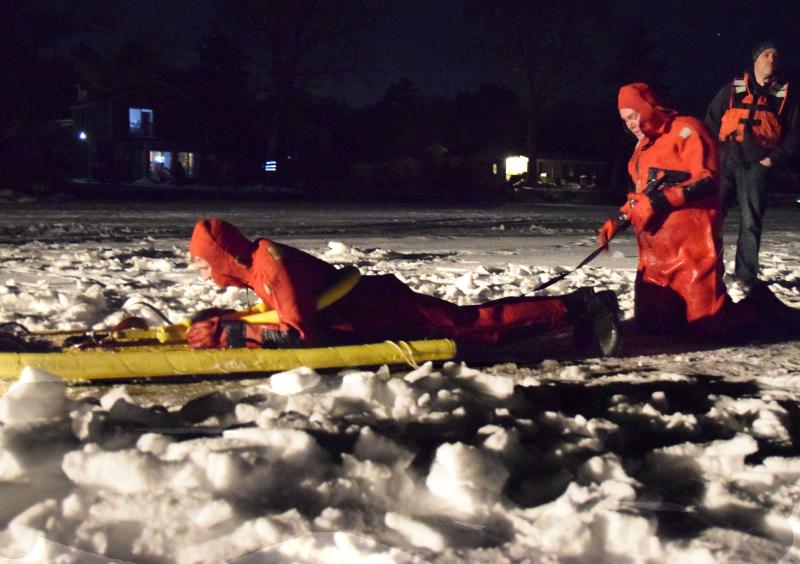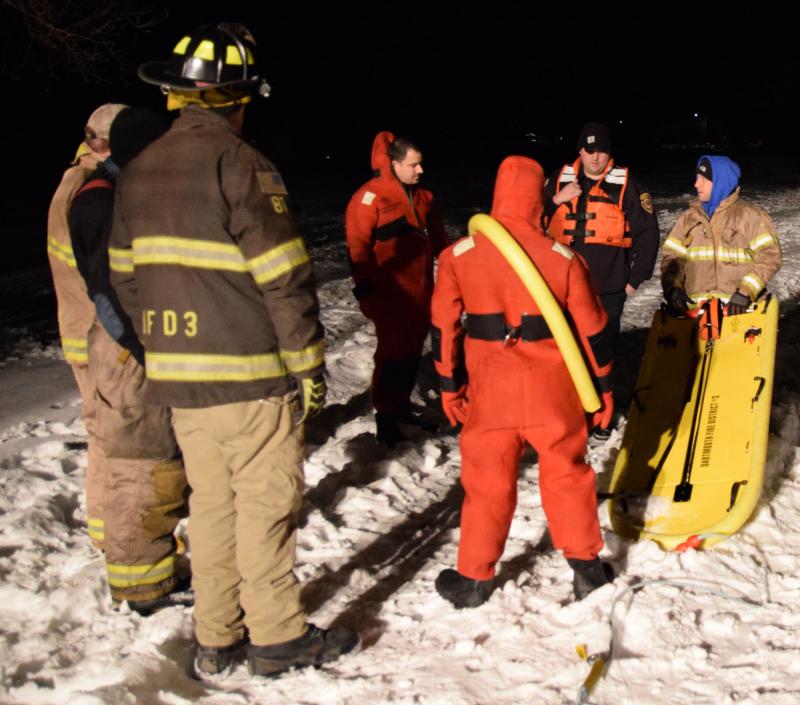Ice rescue training keeps firefighters prepared
As darkness fell over frozen Lake Noquochoke on January 10, a man's face could be seen bobbing up and down in the freezing waters through a hole in the ice about 100 feet from shore.
Slowly and carefully, rescuers from Dartmouth Fire District No. 3 made their way along the ice in a specially-designed rescue sled, propelling themselves forward inch by inch along the slippery ice and snow until they reached their victim.
It could have been a serious situation, if it wasn't for the fact that the man was one of the district's own, outfitted in a heat-retaining survival suit playing the part of an ice rescue victim.
It was part of the fire district's ice rescue training exercise, one of several drills the department holds both in light and darkness to acquaint firefighters with a variety of conditions, explained Lt. Tim Bernard.
District No. 3's coverage area in the northern part of town includes several large lakes and streams, which means fire crews always have to be prepared to make rescues if needed.
The process of rescuing a person who has fallen through the ice differs depending on the condition of the victim, Bernard explained. Using specifically-designed MARSARS rescue sleds, crews slowly make their way across ice, which may be stable or thin, to a victim trapped in icy waters. The sled, anchored to shore with a motor, uses mechanical advantage to quickly pull both rescuer and victim to safety once both are secured.
For conscious and alert victims, a rescuer helps strap them onto the sled. But if a victim is unconscious or otherwise unable to move, crews use a special sling to help victims onto the sled.
Firefighter Rick Fernandes played both parts, as he took on the role of a person trapped below the ice. Donning a survival suit to protect from the freezing cold water, he alternated between playing a conscious and unconscious victim so his fellow firefighters could practice rescues of both.
“It’s very cold,” Fernandes said. “The wetsuit helps but it’s still cold.”
Before crews called it a night, Fernandes reversed his role and switched over to a rescuer. He noted the cold temperatures is always the toughest part of rescues.
The recent stretch of below freezing weather and mid-January temperatures provided the perfect conditions for training exercises, although on real calls conditions may not be as ideal.
“Right now in training it’s great conditions,” Bernard said. “A lot more often when people fall through the ice is thawing.”
Luckily, ice rescue calls are not common for District No. 3 thanks to the district’s fire prevention programs. Firefighters travel to area schools and warn youngsters of the dangers of thin ice, significantly reducing the number of incidents.
“We haven’t had an ice call in a while,” Bernard said. “The kids know they shouldn’t be on the ice.” He added that most calls now are for deer or dogs.



